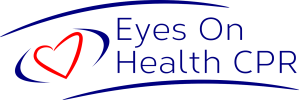
PUMP YOUR WAY TO HEALTH NOW!
-

What is CPR?
Cardiopulmonary resuscitation, better known as CPR, is performed when the heart stops beating.
-

Our Classes
Certified CPR and First Aid training for individuals, families, and teams since (year here).
-

Save Lives
Be ready to respond when it matters most — your actions can make all the difference.
Why learn CPR?
When someone’s heart stops, CPR keeps oxygen flowing until help arrives — giving them the best chance to survive.
❤️ Hands-Only CPR
Learning CPR gives you the confidence to act.
📞 Call 911
Learning CPR teaches you how to stay calm, take charge, and get help.
💨 Rescue Breathing
Knowing how to give breaths safely can save young lives during emergencies.
⚡ Use an AED
Recognizing when and how to use an AED gives every victim a fighting chance.
Watch CPR in Action
If you have one or more heart attack or stroke warning signs, don’t wait — call 9-1-1 immediately! Get to a hospital fast.
Heart Attack Warning Signs
Uncomfortable pressure, squeezing, fullness, or pain in the center of the chest that lasts more than a few minutes or goes away and comes back.
Pain or discomfort in one or both arms, the back, neck, jaw or stomach.
Shortness of breath with or without chest discomfort.
Other signs such as breaking out in a cold sweat, nausea or lightheadedness.
As with men, women's most common heart attack symptom is chest pain or discomfort. But women are somewhat more likely than men to have some of the other common symptoms, particularly shortness of breath, nausea/vomiting, and back or jaw pain.
Stroke Warning Signs
Sudden numbness or weakness of the face, arm or leg, especially on one side of the body.
Sudden confusion, trouble speaking or understanding.
Sudden trouble seeing in one or both eyes.
Sudden trouble walking, dizziness, loss of balance or coordination.
Sudden, severe headache with no known cause.
“ Staying active, eating healthy and getting plenty of sleep can help kids stay healthy now and for a lifetime.”
- The American Heart Association
Keeping Hearts Healthy from Childhood to Adulthood
The American Heart Association suggests a few tips for helping keep kids heart-healthy:
Schedule family time for physical activity.
Plan a weekly menu and prep your meals.
Simplify your family’s schedule.
Set a regular bed time – and wake-up time.
Live by example.


